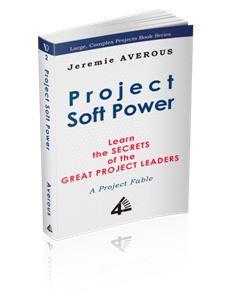Jeremie Averous's Blog, page 151
May 17, 2012
The KUNG FU MASTER, the second Project Soft Power role
Following the SPIDER role, let’s present the KUNG FU MASTER role.

Breaking Constraints: Kung Fu Master in Action
Like the Kung Fu Master, the successful project leader can practice for hours, days, months and years the disciplines of project leadership. He can focus intensively for hours on a subject, silent and patient, and strike like lightning, suddenly breaking the seemingly unbreakable obstacle with the focused stroke of his bare hands on its rough surface.
Discipline is a key attribute of the successful project leader. It means relentlessly practicing the fundamental disciplines of project management, making sure the underlying processes deliver with the most limited variance possible, week after week, month after month.
Focus is another key tool of the project leader. Success is the result of the project leader focusing intently her attention on the very few important things that drive the project.
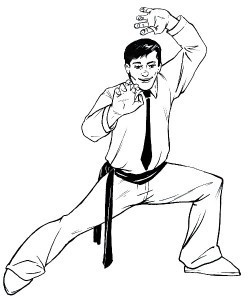
Project Soft Power: The Kung Fu Master Role
One outstanding issue for the Project Leader is to identify the few constraints that drive the effective delivery of the project, and concentrate on them attention and effort. A project will be driven by a very limited number of constraints, which are often resources or deliverables for critical convergence points. The key role of the successful project leader is to identify them and focus on overcoming them. Only by overcoming the project constraints through relentless focus will the project be delivered successfully
Discipline and focus of the Kung Fu Master are key to outstanding execution. Relentless discipline of running the basic project management processes. Relentless focus of choosing priorities and effectively stick to them.
Are you a Kung Fu Master? How can you improve your discipline and focus?
Coming soon…

May 15, 2012
School does not interest people in entrepreneurship… except in China!
The graph below is an extract from the report “Entrepreneurship in the EU and beyond” by the European commission. It shows that overall, school does not make people interested in entrepreneurship.
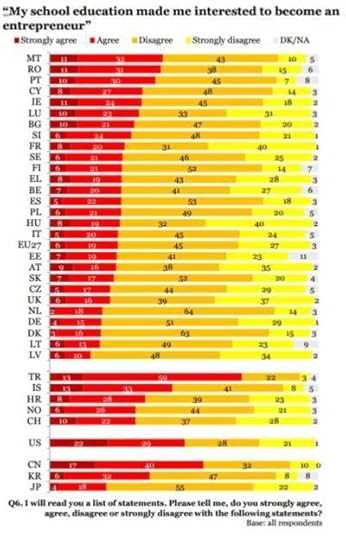
did your school education make you interested in becoming an entrepreneur?
Did you remark the funniest thing in this graph? School makes people much more interested in entrepreneurship in China (CN, at the bottom) than in most European countries, and even than in the US!
Isn’t there something wrong here?

May 12, 2012
What would you do if you were not afraid?
This is an interesting sentence posted on Facebook corporate office walls. It’s quite a deep question in fact. Reflect on it for a minute.

Embracing fear
Right now as I happen to be pushing myself more often out of my comfort zone, I often face fear. It grasps me in the guts and I have really wrenching days where I feel stressed and miserable.
Fear is there to prevent us from doing really dangerous things. Recently it has mainly come up when I was trying new things. Honestly, seen from the rational perspective, the possible consequences could not have been so bad. I know I would do much more if I was not afraid – or at least it would not be such a struggle.
People say you can become accustomed to fear when confronting it often. I still think it is useful to feel it somehow, but you need to be able to tame it enough that it does not prevent you from doing great things. I am still not there. Sometimes fear literally almost paralyzes me, with no objective reason. I’m working on it – still work-in-progress!.
And you, what would you do if you were not afraid?

May 10, 2012
The SPIDER – the first role of Project Soft Power
The SPIDER is about weaving a network of stakeholders that is effective to allow the project delivery.
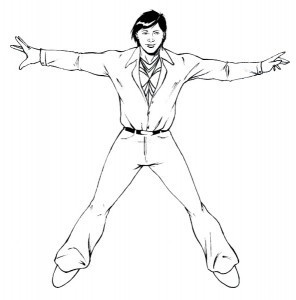
Project Soft Power: the Spider role
Like the spider, the successful Project Leader patiently weaves its network, the cobweb. Like the spider, the general idea is to capture efficiently anything that comes close to the project and could influence its outcome – stakeholders in particular -, and manage them appropriately.
Having an effective, functional network is a primordial tool for the Project Leader. We are not speaking here of the social professional network that is recommended for career advancement and other mundane tasks. We are targeting a specific network that has to be setup specifically for the execution of the project.
Let’s face it: the most challenging projects (and the most rewarding, if they are successful) will have to deal with a lot of opposition, and the project leader’s job is to address this adequately to allow for the project to proceed.
Building and nurturing an effective project network includes identifying key stakeholders, engaging them, allowing 2-way communication, and nurturing the network on a continuous manner. The internal network inside the project team and on the project sites should not be forgotten. And disbanding the network at the end of the project needs to be considered with attention as people often remember the end more vividly.
The SPIDER role, weaving the Project Leader’s network, is an essential practice. It needs to be made effective by developing and nurturing a specifically targeted network related to the project. Going in the field or meeting stakeholders across hierarchy and roles is key to develop the most effective network. This activity requires proper planning and the successful Project Leader’s personal attention and time, so as to develop strong personal connections with the relevant persons.
So, are you an effective SPIDER?
Coming soon…

May 8, 2012
How Crowdfunding redefines the future of Creation for million of artists
The International Herald Tribune published an amazing infographics about Kickstarter. According to these stats, this leading crowdfunding site gathered in 3 years more than 200 million dollars of funding!
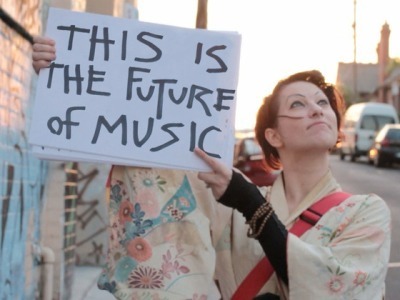
Amanda Palmer and the future of creation
Most of the funding happens to be for the creative arts. Yes, because crowdfunding redefines the future of all creative arts. Before, government subsidies were the only way to get funded when the big companies that controlled the market did not want to hear about you. Today, ordinary citizens vote with their feet.
Check out the example of the video of Amanda Palmer, a musician. As of early May she had already gathered more than 500K$, thanks to some viral diffusion by Seth Godin and others. The computation is simply awesome: 10,000 backers put on average 50$ to help her get her album out. And it’s not finished!!
Crowdfunding is changing the world. It redefines the economics and the possibility of Creation for millions or artists. And if you don’t believe it, just listen and watch the excitement of the creators. Go on Kickstarter. And enjoy the video below!

May 5, 2012
Building stone by stone an enduring monument
Following a previous blog post about the patience conundrum here are some nice quotes about patience I want to share with you – and how I modified one to create a personal motto.
“Have patience with all things. But, first of all with yourself” – Saint Francis de Sales
“If people knew how hard I had to work to gain my mastery, it would not seem so wonderful at all” – Michelangelo
“Seek patience and passion in equal amounts. Patience alone will not build the temple. Passion alone will destroy its walls“- Maya Angelou
“The man who removes a mountain begins by carrying away small stones” – Chinese Proverb
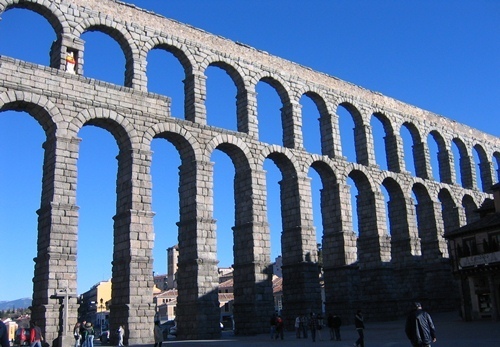
Segovia Aqueduct, one of the most elegant stone structures
I’d like to modify the last one. Watching inspiring structures that have been built and are there for us all to enjoy, like the incredibly elegant aqueduct of Segovia built by the Romans two millennia ago, which still inspires awe and admiration, I have created my motto regarding patience:
“The man who build an enduring monument for all to enjoy begins by carrying small stones”
What do you think?

May 3, 2012
Unveiling “Project Soft Power” – how to make Project Leaders reliably successful
My new book, ‘Project Soft Power’, will now be published very soon (the final production process has started). In this blog post as well as in 6 weekly sequels leading to the book’s publication, I will share with you what is Project Soft Power and why it is important to the world of the Fourth Revolution.
In the Collaborative Age, beyond the Fourth Revolution, organizations will be open and fluid. They will be organized around temporary projects. Yet, we don’t have today a consistent framework that allows a reliable project delivery, in particular when it comes to complex projects (those projects that involve many inter-related participants that all have different aims and interests). 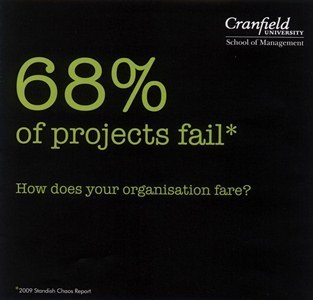 Although much progress has been done in the past decades to formalize specific tools around project management, the percentage of projects that fail outright or that does not deliver the expected value is staggering (depending on the sources, between 60 to 80% of projects). And research shows that it does not significantly improve through the careful use of processes described in thick manuals, and the increasing number of certified professionals in the use of these processes.
Although much progress has been done in the past decades to formalize specific tools around project management, the percentage of projects that fail outright or that does not deliver the expected value is staggering (depending on the sources, between 60 to 80% of projects). And research shows that it does not significantly improve through the careful use of processes described in thick manuals, and the increasing number of certified professionals in the use of these processes.
What is then the difference that makes project delivery a more reliable endeavour? I believe it is ‘Project Soft Power’, or the application of personal and inter-personal skills to project management. Project Soft Power is deeply rooted in emotional work, and is closely related to some of the key skills of the Collaborative Age K.E.E.N.
First of all, the “project manager” should not manage; she should lead. An unknown situation cannot be managed; we can only lead through it. Thus we have have decided from now on to use ‘Project Leader’ instead of ‘Project Manager’. In the Collaborative Age, the manager, a concept from the Industrial Age, will be obsolete anyway.
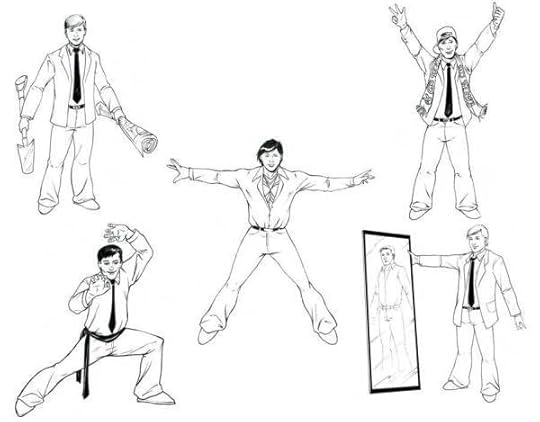
Project Soft Power characters
We have identified 5 main Project Soft Power skills that correspond to the following roles:
the SPIDER (weaving its network)
the KUNG FU MASTER (executing through focus and discipline)
the ENTREPRENEUR (able to invest upfront and defer instant gratification to reap later returns)
the TEAM COACH (building an effective team)
the PEOPLE CATALYST (unleashing the talents of the individuals)
In the next weeks I will publish on a weekly basis a description of each of these roles. Get ready for a mind-changing description of success factors in the Collaborative Age!
Coming soon…

May 1, 2012
Do you have a work or a job?
While searching for images on internet I stumbled upon that one:
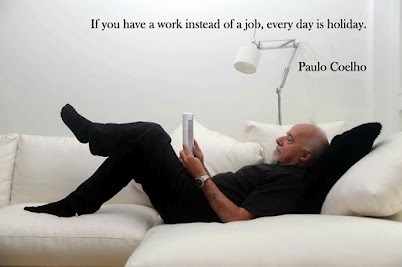
So, do you have a work or a job?
This of course caught my attention by the implied, controversial meaning (and because it looks cool to have a work as it is implied!).
So what’s the difference between a work and a job? After some thoughts I’ll try a definition.
At the first level of course, what makes the difference between a work and a job is the level of passion and of personal implication.
A job is some activity in a large organization that implies that you’re being told what to do and that you limit your implication to a given framework of obligations (including in particular, specific times and situations).
A work is a dedication to a purpose, to create a body of work in the sense that it has for an artist. It can’t be stopped by external rules such as limited times for work or for rest; its implication are broader than just an organization. It creates dedication through passion.
So, do you have a work or a job? Think about it for a while. If you have just a job, it might be time to change!

April 28, 2012
How to overcome the patience conundrum
One of the most difficult emotional issues I am encountering as a new entrepreneur is the issue of patience. It is also at the heart of a deep contradiction everyday: we need to act today with urgency to plant the seed for tomorrow; yet, we need to be patient to reap the harvest when it will come.
It is necessary to be patient when it comes to building the company’s infrastructure and products, as it will take time; when one waits for prospects to respond to proposals. It is important not to look overly hurried and in need when it comes to negotiating contracts.
Yet it is also important to be pushy and in a hurry when it comes to produce the company’s infrastructure, develop products and tools that will be the basis of the company’s future success, or when it comes to respond to inquiries from potential future clients.
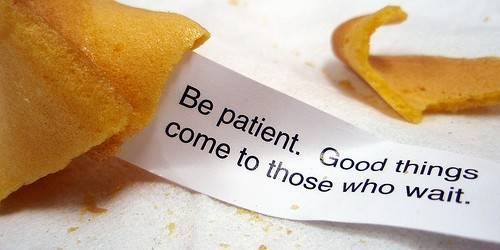
How patient are you?
There is a significant contradiction here, that we need to be managed on a daily basis. Ultimately, success will not happen by itself. It is important to be moved by a feeling of urgency, do things, try things, fail, and start again. And, at the same time, we need to be patient so as to let the world time to adapt to the change we are introducing.
How long do we have to wait? How long is too long, and we need to move on? With how much urgency do we need to act today for a possible, uncertain future result? These are all questions that we encounter on a daily basis. These are questions that are even more present when we start a large project, like a company.
There is only one solution. Passion. Because only passion will give us the energy to devote large amounts of time today on things that might or not give rise to results tomorrow. Because we know that whatever happens we will have enjoyed ourselves on the way, and what we will have learnt will be useful some day.
What prevents you from spending more time on what you enjoy doing?

April 26, 2012
The way you receive feedback tells more about you than the feedback itself
We know that feedback tells you a lot about the person who gave it, for sure. Now, feedback has got a contents which is hopefully useful to you too.
Wait a minute. And what about the way you receive feedback? How much can you learn from it, beyond the contents of the feedback itself? Do you reject feedback outright and forever? Do you get through a dip and get stronger, seeing why this feedback was there? Do you take feedback with enthusiasm like in the wordcloud below?
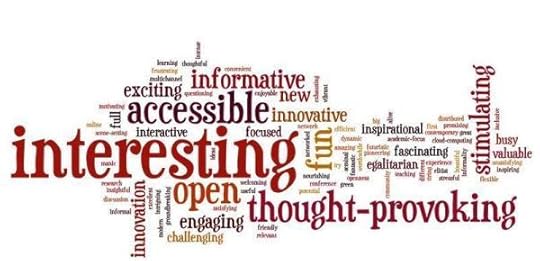
is that how you take feedback generally?
Actually you might learn even more about yourself observing how you take tough feedback than in the actual contents of the feedback itself.
Reflect on how you much you can learn about you just by the way you react to a real tough feedback. That’s interesting!


